Animals
Understanding Mammals: A Comprehensive Guide On The Diversity, List & Characteristics Of Mammals

Are you aware that there are more than 6,400 recognized species of mammals on Earth? From the small bumblebee bat, weighing only 2 grams, to the enormous blue whale, which can reach up to 98 feet in length and weigh over 200 tons, mammals come in a wide variety of shapes and sizes.
Whether you’re fascinated by their unique adaptations, curious about their diverse habitats, or eager to explore the intricacies of mammal classification, this comprehensive guide will provide you with a wealth of knowledge about these incredible creatures. Join us as we embark on a journey to understand the diversity, list, and characteristics of mammals.
From the smallest rodent scurrying through the forest to the majestic predators ruling the savannah, mammals play vital roles in ecosystems around the world. Let’s dive in and discover the wonders of the mammalian world!
Key Takeaways:
- Mammals encompass a vast range of species, from the smallest bats to the largest whales.
- Their diverse adaptations and characteristics make them unique among animals.
- Understanding mammal classification and diversity is essential for comprehending their role in ecosystems.
- Mammals exhibit a wide variety of behaviors, habitats, and anatomical features.
- Conservation efforts are crucial for protecting the incredible diversity of mammalian species.
What Defines a Mammal?
To truly understand what defines a mammal, it is important to explore their unique features, evolutionary history, and diverse classification. From the distinctive characteristic of mammary glands to the fascinating variety of mammal species, these remarkable creatures continue to captivate scientists and nature enthusiasts alike.
Understanding the Features of Mammals
One key feature that sets mammals apart is their ability to nurse their young with milk produced by their mammary glands. These specialized glands are a defining characteristic of mammals and have played a crucial role in their evolution and survival. Additionally, mammals have a unique skeletal structure, warm-blooded metabolism, and a range of adaptations that allow them to thrive in various habitats.
The Evolutionary History of Mammals
Mammals have a rich evolutionary history that spans millions of years. They are believed to have descended from reptilian ancestors and have undergone significant adaptations over time. Through the process of evolution, mammals have developed diverse anatomical, physiological, and behavioral traits that have enabled them to occupy a wide range of ecological niches.
Importance of Mammary Glands in Mammals
The presence of mammary glands in mammals is a defining characteristic of the group. These glands produce milk, a nutrient-rich substance that provides vital nutrition to mammal offspring during their early stages of life. This unique form of feeding has contributed to the success and survival of mammalian species, allowing for the nurturing and protection of their young.
Types of Mammals
When exploring the world of mammals, it becomes clear that they come in various shapes and forms. Mammals can be broadly classified into three main groups: placental mammals, monotremes, and marsupials. Each group exhibits distinct reproductive strategies and unique adaptations that have allowed them to thrive in different environments.
Exploring Placental Mammals
Placental mammals, the largest and most diverse group of mammals, give birth to live young who have fully developed internally before birth. These mammals have a placenta, a specialized organ that allows for the exchange of nutrients and waste between the mother and the developing fetus. Placental mammals include familiar creatures such as dogs, cats, whales, and humans.
Insight Into Monotremes
Monotremes are an extraordinary group of mammals that lay eggs rather than giving birth to live young. They are considered to be the most primitive group of mammals and include the platypus and echidna. Monotremes have a unique reproductive system, combining reptilian and mammalian characteristics.
Discovering Marsupials
Marsupials are another fascinating group of mammals that are characterized by their pouches, in which they carry and nurture their undeveloped young. These pouches provide a safe environment for the marsupial offspring to grow and develop after being born in an embryonic state. Well-known examples of marsupials include kangaroos, koalas, and opossums.
Characteristics Of Mammals
In this section, we will explore the fascinating characteristics that make mammals unique. From their ability to produce milk to their specialized anatomy, mammals have evolved a wide range of adaptations that enable them to thrive in various environments.
Able to Produce Milk
One of the defining features of mammals is their ability to produce milk. Female mammals, known as mothers, possess mammary glands that secrete milk to nourish their young. This adaptation ensures the survival and growth of offspring, providing them with essential nutrients and antibodies.
Diaphragm
Mammals have a diaphragm, a muscular organ that plays a crucial role in breathing. It contracts and relaxes, allowing for the expansion and contraction of the lungs, enabling mammals to inhale and exhale air efficiently.
Endothermy
Endothermy is a characteristic unique to mammals. It refers to the ability of mammals to regulate their own body temperature independently of the environment. This adaptation allows mammals to thrive in a wide range of habitats, from scorching deserts to freezing polar regions.
Four-Chambered Heart
Mammals have a four-chambered heart, consisting of two atria and two ventricles. This advanced cardiovascular system ensures efficient circulation of oxygenated blood throughout the body, delivering oxygen and nutrients to vital organs and tissues.
Hair or Fur
An important characteristic of mammals is the presence of hair or fur on their bodies. Hair provides insulation, protects the skin, and plays a role in sensory perception. It can vary in texture, color, and thickness, serving various purposes depending on the species and environment.
Internal Fertilization
Mammals reproduce through internal fertilization, where the male’s sperm fertilizes the female’s eggs inside the body. This adaptation allows for better protection, development, and nurturing of the offspring until birth.
Mammary Glands
Mammary glands are unique to mammals and are responsible for the production of milk. These specialized glands develop during pregnancy and lactation, enabling the nourishment of offspring. The structure and number of mammary glands vary among different mammal species.
Neocortex
The neocortex is a part of the brain that is highly developed in mammals. It is responsible for complex cognitive functions, including perception, consciousness, language, and reasoning. The size and complexity of the neocortex correlate with the intelligence and adaptability of mammals.
Single-Boned Lower Jaw
Mammals have a single-boned lower jaw, known as the mandible. This structure allows for efficient chewing and grinding of food, facilitating the digestive process. The mandible is an essential adaptation that enables mammals to consume a diverse range of diets.
Specialized Teeth
The teeth of mammals are highly specialized, adapted to their specific dietary needs. Mammals exhibit various types of teeth, including incisors, canines, premolars, and molars, each serving a specific role in capturing, tearing, cutting, crushing, or grinding food.
Three Bones in the Middle Ear
Mammals have three bones in the middle ear, known as the ossicles: the malleus, incus, and stapes. These bones transmit sound vibrations from the eardrum to the cochlea, allowing mammals to hear a wide range of sound frequencies with remarkable precision.
Viviparity
Most mammals exhibit viviparity, a mode of reproduction where the embryos develop within the mother’s body and are nourished through a placenta. This adaptation enables mammals to give birth to live young, ensuring better maternal care and higher survival rates.
Types Of Mammals
In the fascinating world of mammals, there is a remarkable diversity based on their unique reproductive systems. Mammals can be categorized into different types, each with its own distinct characteristics. Let’s explore these types and uncover the wonders of mammal reproduction.
Types Of Mammals By Reproduction System
Mammals can be classified into three main groups based on their reproductive methods:
- Monotremes: These intriguing creatures are known as the oddballs of reproduction. Monotremes are the only mammals that lay eggs instead of giving birth to live young. This small group includes the platypus and echidna, both native to Australia and parts of New Guinea. Monotremes possess unique reproductive organs and have a fascinating blend of traits from reptiles and mammals.
- Marsupials: Marsupials are renowned for their distinctive reproductive strategy. After a relatively short gestation period, the underdeveloped young are born, and they continue their development within a special pouch. Iconic marsupials include kangaroos, wallabies, and koalas. The marsupial pouch provides a nurturing environment for the young, allowing them to grow and develop until they are ready to explore the world.
- Placental Mammals: The majority of mammal species fall into this category. Placental mammals, including humans, have a more complex reproductive system. They nurture their young within the mother’s womb through a specialized organ called the placenta. This allows the developing offspring to receive nourishment and oxygen from the mother’s bloodstream. Placental mammals exhibit a wide range of diversity, from tiny mice to magnificent elephants.

Monotremes: The Oddballs Of Reproduction
Monotremes are a remarkable group of mammals with a unique reproductive strategy. They lay eggs, a rare phenomenon among mammals. Monotremes possess cloacas, a single opening for both reproduction and waste elimination. Male monotremes have a spur on their hind legs that secretes venom, which is used during competition and defense.
“Monotremes represent an extraordinary example of reproductive adaptation in the animal kingdom.” – Dr. Jane Dawson, mammalogist
Monotremes have a relatively short gestation period before laying eggs. The eggs are incubated outside the mother’s body in a nest or burrow. After hatching, the young monotremes, called puggles, are nurtured by the mother, who provides them with milk through mammary glands. This combination of egg-laying and milk production is a truly unique adaptation found only in monotremes.
The two main species of monotremes are the platypus and the echidna. The platypus is well-known for its duck-like bill, webbed feet, and ability to detect prey through electroreception. The echidna, also known as the spiny anteater, has a spiky coat and a long snout for feeding on insects and ants.
Monotremes are living relics from an ancient lineage of mammals, representing a fascinating aspect of evolutionary biology. Their reproductive strategy continues to captivate scientists and ignite curiosity about the diversity of life on Earth.
Marsupials: The Ultimate Pouch Crew
In this section, we explore the fascinating world of marsupials, a unique group of mammals known for their distinctive reproductive system and pouches. Marsupials are characterized by their reproductive adaptations and nurturing behaviors, making them truly remarkable creatures.
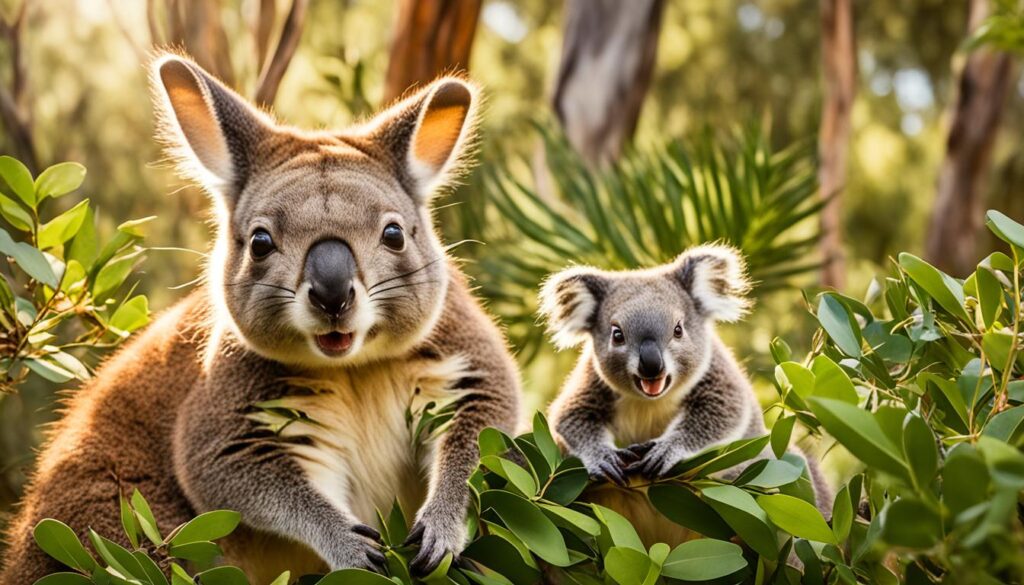
Unique Characteristics of Marsupials
Marsupials possess a range of distinct characteristics that set them apart from other mammals. One of the most prominent features is the marsupial pouch, where the young, called joeys, complete their development after birth. The pouch provides a safe environment for the vulnerable joeys, enabling their growth and protection.
Additionally, marsupials have a specialized reproductive system where the young are born in an undeveloped state. After birth, the newborns crawl into their mother’s pouch, where they attach to a teat and continue their growth. This adaptive reproductive behavior allows marsupials to thrive in various environments and adapt to changing ecological conditions.
Behavior of Marsupials
Marsupials display a diverse range of behaviors that are specific to their individual species and their habitats. Some marsupials, such as kangaroos and wallabies, are known for their incredible jumping abilities, which help them navigate their environments and escape from predators.
Other marsupials, like koalas and wombats, are adapted for a more sedentary lifestyle and are expert climbers or burrowers. These behaviors enable them to find food sources and seek shelter in their natural habitats.
Placental Mammals: The Baby Belly Champions
Placental mammals, on the other hand, have their own unique adaptations when it comes to reproduction. Unlike marsupials, placental mammals nurture their young inside the womb through the placenta, a specialized organ that facilitates the exchange of nutrients and waste between the mother and offspring.
Adaptations of Placental Mammals
Placental mammals have evolved a wide range of adaptations that allow them to thrive in various environments. From the ability to live in terrestrial, aquatic, and aerial habitats to their diverse feeding habits, placental mammals have developed remarkable adaptations to ensure survival.
These adaptations include features such as specialized teeth for different feeding habits, efficient digestion systems, and various forms of locomotion. Additionally, placental mammals have developed sophisticated sensory systems, including acute hearing and vision, to navigate their surroundings and find food sources.
Reproduction in Placental Mammals
Placental mammals reproduce through internal fertilization, where the sperm fertilizes the egg within the female’s reproductive tract. The fertilized egg then develops into an embryo that attaches to the uterus wall, forming the placenta.
During gestation, the placenta supplies the developing young with oxygen, nutrients, and removes waste products. This method of reproduction allows placental mammals to have longer gestation periods and give birth to well-developed young.
Table: A Comparison of Marsupials and Placental Mammals
| Characteristic | Marsupials | Placental Mammals |
|---|---|---|
| Reproductive System | Young develop in mother’s pouch | Young develop in the womb through the placenta |
| Behavior | Variable behaviors depending on species; jumping, climbing, burrowing | Diverse range of behaviors; adapted to different habitats and food sources |
| Adaptations | Pouch for nurturing young; specialized reproductive system | Diverse adaptations for various habitats and feeding habits |
List Of Mammals
This section presents a comprehensive list of mammals, showcasing the remarkable diversity within the mammalian kingdom. Mammals encompass a vast array of species, ranging from the small and elusive to the large and majestic. From the iconic lion to the minutely-detailed pygmy shrew, the world of mammals is a testament to the wonders of evolution and adaptation.
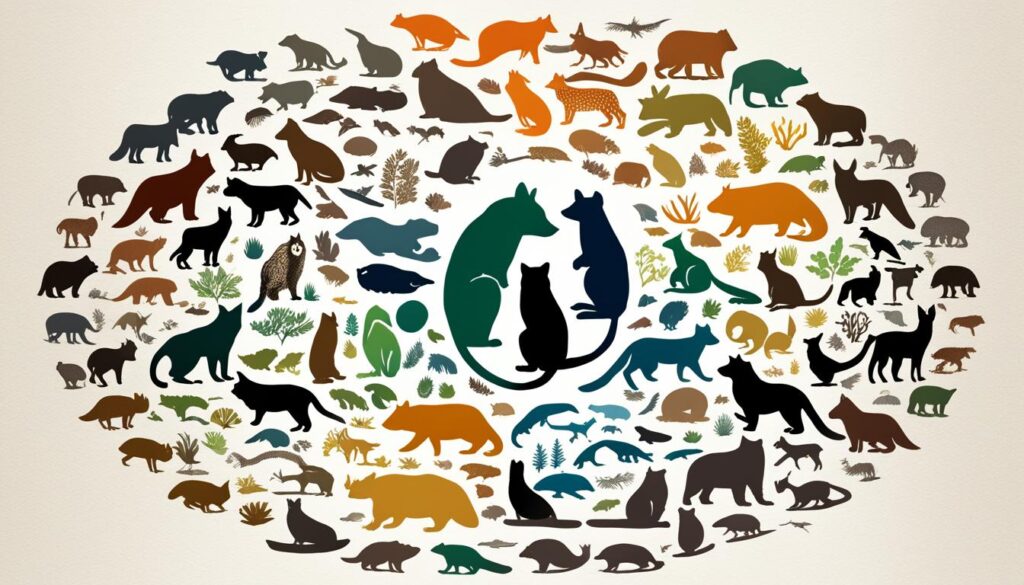
Threats And Conservation Of Mammals
This section discusses the various threats that mammals face and highlights the importance of conservation efforts in protecting these vulnerable creatures. Mammals play a crucial role in maintaining the balance of ecosystems, and their conservation is essential for preserving biodiversity.
Indirect Threats
Mammals are susceptible to indirect threats that result from human activities and environmental changes. Habitat loss is a significant concern, as deforestation, urbanization, and agricultural expansion continue to encroach upon natural habitats. The destruction of forests, wetlands, and grasslands deprives mammals of their homes and sources of food.

Climate change poses another dire threat to mammal populations. Rising temperatures, extreme weather events, and altered precipitation patterns disrupt ecosystems and impact the availability of food and water. This results in habitat degradation and reduced reproduction rates for many mammal species.
Direct Threats
In addition to indirect threats, mammals also face direct threats from human activities. Hunting and poaching for fur, meat, and body parts have decimated mammal populations globally. Unsustainable hunting practices and the illegal wildlife trade contribute to the decline of numerous species, pushing them towards the brink of extinction.
Endangered mammals also fall victim to illegal wildlife trafficking, which poses a severe threat to their survival. The demand for exotic pets, traditional medicine ingredients, and rare animal products drives the illegal trade, leading to the exploitation and depletion of vulnerable mammal species.
Mammal conservation plays a pivotal role in combating these threats and safeguarding endangered species. It involves implementing measures to protect habitats, regulating hunting practices, raising awareness about the importance of conservation, and enforcing legislation to combat illegal wildlife trade.
| Threats | Impact |
|---|---|
| Habitat loss | Displacement, reduced food availability |
| Climate change | Habitat degradation, reduced reproduction rates |
| Hunting and poaching | Declining populations, extinction risk |
| Illegal wildlife trade | Exploitation, depletion of populations |
Table: Threats to Mammals and Their Impacts.
Conservation Acts
Conservation acts play a crucial role in protecting endangered species and preserving the delicate balance of ecosystems. These acts provide legal frameworks and guidelines for managem
enting and conserving mammalian species, ensuring their survival and promoting biodiversity. One prominent legislation in the United States is the Endangered Species Act. Enacted in 1973, this act aims to prevent the extinction of threatened and endangered species, including mammals, by providing protection and implementing recovery plans.
Internationally, there are various conservation efforts and treaties dedicated to wildlife protection, such as the Convention on International Trade in Endangered Species of Wild Fauna and Flora (CITES). CITES regulates international trade in endangered species and provides a framework to combat wildlife trafficking.
Additionally, organizations like the International Union for Conservation of Nature (IUCN) facilitate global conservation initiatives. Through assessments, policy advocacy, and knowledge sharing, the IUCN leads efforts to protect and conserve mammalian species and their habitats worldwide.
By implementing and enforcing wildlife protection laws, conservation acts contribute to the preservation of mammalian species and the conservation of their natural habitats.
Mammals in the Wild
In their natural habitats, mammals have evolved and adapted to thrive in diverse environments. From the depths of the ocean to the heart of the rainforest, these remarkable creatures have developed unique characteristics and behaviors to survive and thrive. This section will explore the fascinating lives of mammals in the wild, focusing on the adaptations of marine mammals, the distinctive traits of terrestrial mammals, and the special behaviors of arboreal mammals.
Adaptations of Marine Mammals
Marine mammals are a diverse group that includes whales, dolphins, seals, and sea lions. These incredible creatures have evolved numerous adaptations to thrive in water. Their streamlined bodies and torpedo-like shapes enable efficient swimming and diving, allowing them to hunt for food and evade predators. Marine mammals also have specialized flippers or fins that aid in locomotion and navigation. Blubber, a thick layer of fat beneath their skin, helps provide insulation and buoyancy, allowing them to maintain their body temperature in cold water. Additionally, these mammals have developed unique respiratory systems that allow them to hold their breath for extended periods while diving deep underwater. The adaptations of marine mammals have enabled them to become well-adapted and highly successful inhabitants of the world’s oceans.
Unique Characteristics of Terrestrial Mammals
Terrestrial mammals are the most familiar group of mammals as they live on land, including a vast diversity of species such as elephants, lions, and horses. These mammals have evolved numerous adaptations to thrive in various terrestrial habitats. One of the key characteristics of terrestrial mammals is their ability to walk or run on land using specialized limbs. Some species have evolved powerful legs for running, while others have developed adaptations for climbing, burrowing, or digging. Terrestrial mammals also have a wide range of dentition, with different types of teeth specialized for various diets such as herbivory, carnivory, or omnivory. Additionally, many terrestrial mammals have evolved acute senses, such as sharp eyesight or keen sense of smell, to detect predators, find food, or communicate with others. With their remarkable adaptations, terrestrial mammals have carved out niches in diverse ecosystems around the world.
Special Traits of Arboreal Mammals
Arboreal mammals are a group of mammals that have adapted to life in trees. This group includes primates, such as monkeys and apes, as well as a variety of other mammalian species. Arboreal mammals have developed unique traits to navigate and thrive in the treetops. They possess grasping hands or feet with opposable thumbs or toes, allowing them to grip onto branches and move with agility. Some arboreal mammals, such as squirrels, have evolved specialized adaptations like bushy tails that aid in balance and provide stability while leaping between branches. These mammals also have keen eyesight and acute hearing to detect potential threats or opportunities for food. With their extraordinary adaptations, arboreal mammals have conquered the complex and challenging environment of the trees.
Importance of Mammals in Ecosystems
Mammals play a crucial role in maintaining the balance and functioning of ecosystems. They contribute to various ecological processes, including nutrient cycling, seed dispersal, and pollination. Understanding the ecosystem roles of different types of mammals, such as herbivorous, predatory, and omnivorous mammals, is essential for comprehending the complexities of mammal ecology.
Role of Herbivorous Mammals in the Food Chain
Herbivorous mammals, also known as grazers or browsers, have a significant impact on the food chain. They consume plant material, such as leaves, stems, fruits, and seeds, and influence vegetation dynamics, nutrient cycling, and plant community composition. By regulating plant growth, herbivorous mammals help maintain habitat structure and promote the diversity of plant species. They also serve as a food source for other carnivorous mammals and predators, creating a link in the intricate web of trophic interactions.
Impact of Predatory Mammals on Population Dynamics
Predatory mammals, including wolves, lions, and tigers, play a critical role in regulating prey populations. Their presence helps control the population sizes of herbivorous mammals and prevents overgrazing or overpopulation of certain species. By exerting predation pressure, predatory mammals contribute to maintaining the structure and stability of ecological communities. They also promote behavioral adaptations in prey species, leading to the development of defensive strategies and enhanced survival mechanisms.
Contribution of Omnivorous Mammals to Biodiversity
Omnivorous mammals, such as bears and raccoons, occupy a unique niche in ecosystems due to their ability to consume both plant and animal matter. Their dietary versatility allows them to exploit various food resources, contributing to the sustainability and diversity of ecosystems. As omnivores, they can influence seed dispersal by consuming fruits and depositing seeds in different locations. Additionally, their feeding habits can indirectly shape plant communities and influence the abundance and distribution of other animal species.
The intricate relationships between herbivorous, predatory, and omnivorous mammals highlight the interconnectedness of species within ecosystems. Understanding the roles that mammals play is vital for conservation efforts, as any disruption to their populations can have far-reaching consequences for the entire ecosystem. By protecting mammal populations and safeguarding their habitats, we can preserve the delicate balance of nature and ensure the sustainability of our planet’s ecosystems.
Different Types Of Mammals By Groups
Section 11 explores the diverse world of mammals, categorized into different groups based on their unique characteristics and behaviors. This section focuses on various mammal groups, including monotremes, marsupials, placental mammals, primates, rodents, bats, cetaceans, and ungulates. Each group exhibits fascinating adaptations, distinct classifications, and remarkable anatomy.
Monotremes: The Eccentric Egg Layers
Monotremes are a fascinating group of mammals that lay eggs, making them truly eccentric in the mammalian world. This group includes iconic species such as the platypus and echidna. Monotremes have unique reproductive systems and exhibit a combination of reptilian and mammalian traits.
Marsupials: The Pouch Bearers
Marsupials are known for their remarkable adaptation of carrying their young in pouches. This group includes well-known species such as kangaroos, koalas, and opossums. Marsupials have a distinct reproductive system and exhibit a wide range of behaviors and characteristics specific to their habitats.
Placental Mammals: The Womb Nurturers
Placental mammals, the largest group of mammals, nurture their young in the womb through a specialized placenta. This group encompasses diverse species, including humans, dogs, cats, elephants, and whales. Placental mammals have evolved various adaptations and display a wide range of behaviors and anatomical features.
Primates: The Intelligent Behaviors
Primates, including humans, monkeys, and apes, are characterized by their highly developed brains and complex social behaviors. These intelligent mammals exhibit diverse adaptations and can be found in various habitats across the globe.
Rodents: The Playful Scavengers
Rodents encompass a vast group of mammals that are known for their continuous-growing front teeth and their ability to gnaw and chew. This group includes species such as mice, rats, squirrels, and beavers. Rodents exhibit playful behavior and have adapted to various environments.
Bats: The Nocturnal Flyers
Bats are the only mammals capable of sustained flight. They have unique adaptations such as echolocation, enabling them to navigate and locate prey in the darkness. Bats play crucial ecological roles as pollinators and insect controllers.
Cetaceans: The Oceanic Virtuosos
Cetaceans, including dolphins, whales, and porpoises, are highly adapted to marine life. These remarkable mammals have evolved streamlined bodies, flippers, and blowholes to thrive in aquatic environments. Cetaceans have intricate communication systems and exhibit complex social structures.
Ungulates: The Mighty Hoofed Beasts
Ungulates are a diverse group of mammals known for their hooves and herbivorous diets. This group includes iconic species such as horses, deer, cows, and elephants. Ungulates have evolved specialized adaptations to survive in various habitats, and their anatomical features vary based on the species.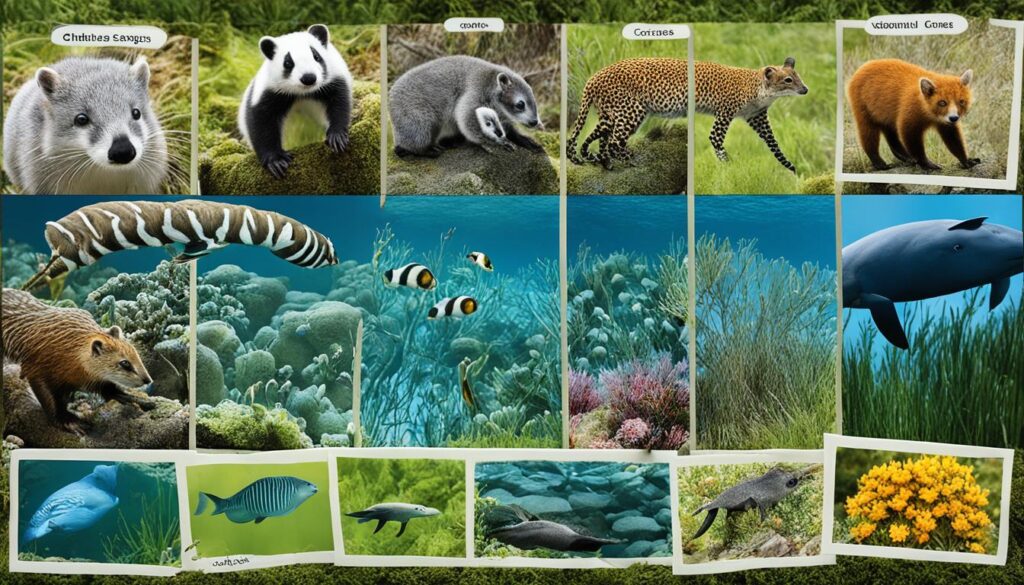
| Mammal Group | Key Features | Behaviors | Adaptations | Anatomy |
|---|---|---|---|---|
| Monotremes | Unique reproductive systems | Egg-laying behavior | Combination of reptilian and mammalian traits | Varying anatomical structures |
| Marsupials | Pouch-bearing reproductive system | Carrying young in pouches | Diverse adaptations based on habitat | Varying anatomical structures |
| Placental Mammals | Placenta for nurturing young | Diverse range of behaviors | Efficient adaptations for survival | Wide variety of anatomical features |
| Primates | Highly developed brains | Complex social behaviors | Opposable thumbs, enhanced intelligence | Diverse anatomical characteristics |
| Rodents | Continuous-growing front teeth | Playful behavior, scavenging | Gnawing adaptations, efficient digestion | Diverse sizes and body structures |
| Bats | Echolocation abilities | Nocturnal flying behavior | Wings, nocturnal vision | Specialized skeletal structures for flight |
| Cetaceans | Aquatic adaptations | Complex communication, social structures | Streamlined bodies, blowholes | Diverse anatomical features for marine life |
| Ungulates | Herbivorous diet, hoofed feet | Group behavior, migration | Specialized teeth, digestive systems | Varied anatomical structures based on habitat |
Conclusion
In conclusion, this comprehensive guide has provided a deep dive into the world of mammals, highlighting their diversity, characteristics, and importance in ecosystems. From their unique reproductive systems and adaptations to their crucial roles in food chains, mammals are truly remarkable creatures.
Throughout this guide, we have explored the defining features of mammals, such as their ability to produce milk, possess a diaphragm, and regulate their body temperature through endothermy. We have also examined their specialized anatomical traits, including a four-chambered heart, hair or fur, and mammary glands, which differentiate them from other animal groups.
Moreover, we have categorized mammals based on their reproductive systems, exploring the eccentric egg-laying monotremes, the pouch-bearing marsupials, and the womb-nurturing placental mammals. We have also delved into specific groups like primates, rodents, bats, cetaceans, and ungulates, each with their own unique behaviors and adaptations.
It is evident that mammals play a vital role in maintaining the delicate balance of ecosystems. Herbivorous mammals contribute to the food chain, while predatory mammals regulate population dynamics. Additionally, omnivorous mammals contribute to biodiversity by interacting with various plant and animal species.
In light of this knowledge, it is crucial to recognize the importance of conservation efforts to protect mammals and their habitats. By understanding and appreciating these fascinating creatures, we can work towards safeguarding their future and preserving the rich biodiversity of our planet.
FAQ
What is a mammal?
How many species of mammals are there?
What are the different types of mammals?
Why are mammals important?
What are the threats to mammal populations?
What conservation efforts are in place to protect mammals?
What are some examples of mammalian habitats?
What are some unique characteristics of primates?
What are some adaptations of marine mammals?
How do mammals reproduce?
What are some unique characteristics of bats?
How are mammals classified?
As our Editor-in-Chief, James plays a pivotal role in ensuring the quality and integrity of our content. With a keen eye for detail and a passion for storytelling, James oversees the editorial process here at A Place for Animals. With years of experience in content editing, James ensures that every piece of content meets our high standards of accuracy and clarity. Under James’ guidance, you can rest assured that the content you read is informative and impeccably crafted.
Animals
Discover Animals That Resemble Squirrels!
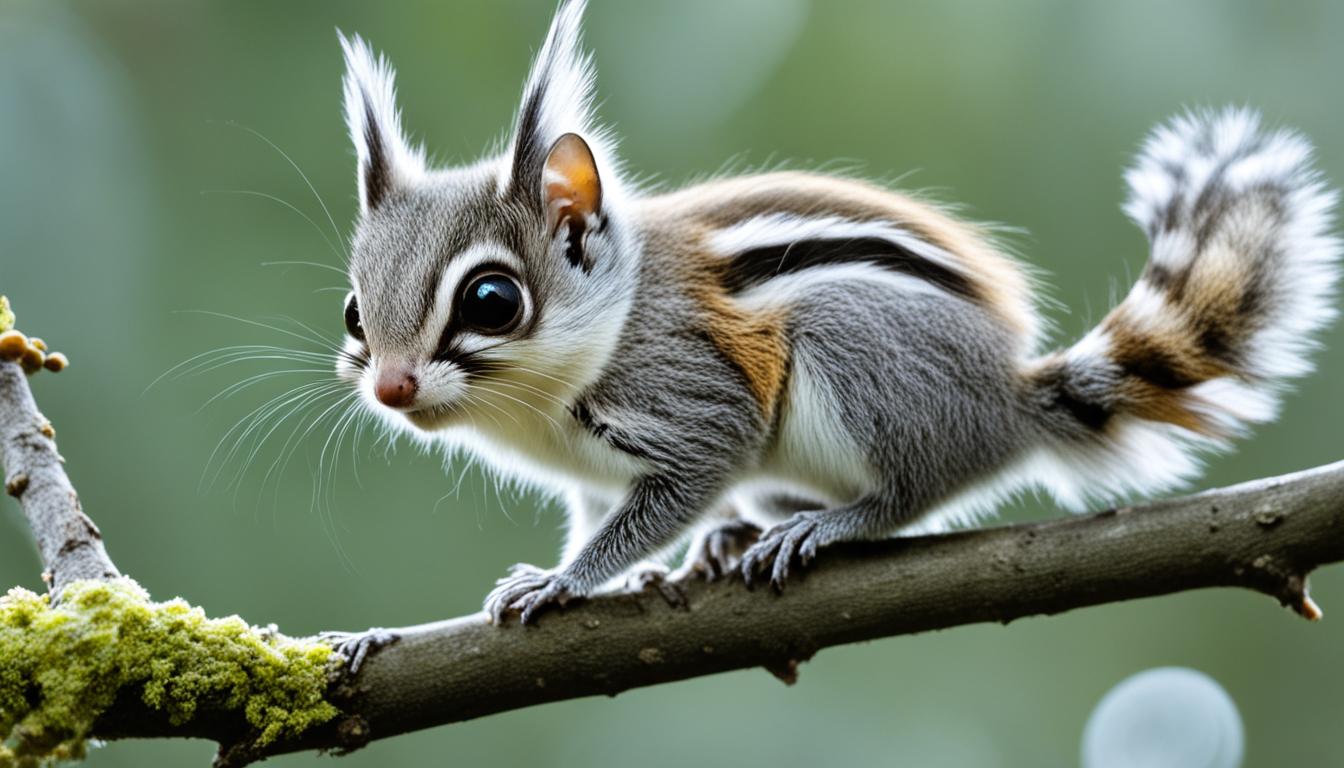
There are many amazing animals out there that look just like squirrels! They not only have similar appearances, but they also behave in comparable ways. Explore the fascinating world of creatures that mimic squirrels in the article “9 Animals That Look Like Squirrels and Share Similar Habits.” Discover creatures with cheek pouches and a habit of hoarding food for later, offering a peek into the diverse range of animals that share traits with our squirrel buddies. Learn more about these incredible creatures and why they are so fascinating!
Key Takeaways:
- There are several animals that resemble squirrels in appearance and behavior.
- These animals possess cheek pouches for storing and transporting food.
- They also exhibit the instinct of hoarding food for later consumption.
- Exploring these resemblances enhances our understanding of evolutionary adaptations.
- Nature’s diversity is highlighted through these remarkable creatures.
Lodgepole Chipmunk – Resemblance to Squirrels and Hoarding Behavior
Lodgepole chipmunks are small rodents commonly found in North America. They have a compact body, striped patterns on their backs, and a long bushy tail, similar to squirrels. One notable similarity between lodgepole chipmunks and squirrels is their cheek pouches, which they use to carry and store food. These animals also exhibit the behavior of hoarding food for later consumption, gathering and storing nuts, seeds, and berries to sustain themselves during times of food scarcity. Their squirrel-like appearance and hoarding behavior make them an interesting animal to study in relation to squirrels.
| Physical Characteristics | Behavior | Habitat |
|---|---|---|
| Compact body | Cheek pouches for food storage | Forest areas in North America |
| Striped patterns on their backs | Hoarding food for later consumption | Tree nests and burrows |
| Long bushy tail | Gathering nuts, seeds, and berries | Prefer areas with ample vegetation |
Hoary Marmot – Similarities in Food Hoarding and Habitat
Hoary marmots are large rodents that inhabit mountainous regions in North America. While they are larger in size compared to squirrels, they share some similarities when it comes to food hoarding. Hoary marmots gather vegetation and create food caches near their burrows, similar to squirrels’ habit of hoarding nuts during winter. Additionally, both hoary marmots and squirrels prefer elevated habitats, with hoary marmots often seen basking in the sun on rocks or perched on higher ground for better visibility. These shared behaviors and habitat preferences make hoary marmots an interesting animal to explore in relation to squirrels.
“Just like squirrels, hoary marmots demonstrate a remarkable ability to locate and store food for future use.”
We are intrigued by the similarities between these two fascinating creatures and their resourceful survival strategies.
Marmots versus Squirrels: A Comparative Look
| Hoary Marmot | Squirrel |
|---|---|
| Larger in size | Smaller in size |
| Gathers vegetation | Gathers nuts and seeds |
| Creates food caches near burrows | Hoards nuts in tree holes or underground |
| Prefer mountainous habitats | Adapt to various habitats |
| Basks in the sun on rocks | Builds nests in tree branches |
Moles and Hamsters – Cheek Pouches and Food Storage
While moles and hamsters may not bear a close resemblance to squirrels in terms of their appearance, they do share some common traits. Both moles and squirrels possess cheek pouches that allow them to store and transport food.
Moles use their pouches to transport captured prey back to their underground tunnels, where they create storage chambers. Similarly, hamsters have expandable cheek pouches that enable them to carry large quantities of food and store them in their burrows or nests.
These shared characteristics of cheek pouches and food storage behaviors highlight interesting similarities between these animals and squirrels.
| Characteristics | Moles | Hamsters |
|---|---|---|
| Cheek Pouches | Present | Present |
| Food Storage | Stored in underground chambers | Stored in burrows or nests |
Conclusion – Wildlife Wonders Resembling Squirrels
In conclusion, we have discovered a fascinating array of animals that closely resemble squirrels and demonstrate similar behaviors. From the adorable lodgepole chipmunk with its squirrel-like appearance and hoarding behavior to the majestic hoary marmot that shares food hoarding tendencies and mountain habitat preferences, these creatures offer a glimpse into the diverse and captivating world of wildlife.
Even though moles and hamsters may not bear a strong physical resemblance to squirrels, they do exhibit common traits such as cheek pouches and food storage behaviors. This highlights the remarkable parallel evolution found in nature and the shared instincts of these remarkable animals.
Exploring the resemblances between these animals and squirrels not only deepens our understanding of their evolutionary adaptations but also showcases the incredible diversity of nature’s creations. These squirrel-like behaviors and characteristics we observe in various wildlife species remind us of the intricate web of life and the wonders that surround us.
FAQ
Are there any animals that resemble squirrels?
What is the Lodgepole Chipmunk?
Do Lodgepole Chipmunks exhibit hoarding behavior like squirrels?
Where can Hoary Marmots be found?
Do Hoary Marmots share any similarities with squirrels?
What are some common traits between moles, hamsters, and squirrels?
What does exploring these animals’ resemblances to squirrels reveal?
Are There Any Intriguing Animals That Resemble Squirrels?
There are indeed intriguing animals starting with i that resemble squirrels. The Indian giant squirrel, also known as the Malabar giant squirrel, bears a striking resemblance to its smaller counterpart. With its vibrant fur and impressive size, this fascinating creature is a sight to behold in the forests of India.
Source Links
- https://www.hummingbirdsplus.org/nature-blog-network/9-animals-that-look-like-squirrels-and-share-similar-habits/
- https://coolwoodwildlifepark.com/animals-that-look-like-squirrels/
- https://phys.org/news/2014-09-extinct-squirrel-like-species-discovery-earlier.html
Paul’s love for animals knows no bounds. As a dedicated writer and animal lover, Paul brings a unique perspective to our team. His firsthand experiences with various animals enrich our content and provide valuable insights into their behavior and needs. Whether he’s sharing tips for pet care or shedding light on pressing conservation issues, Paul’s passion for animals shines through in everything he does.
Animals
Ultimate Guide to Ferret Cage Setup & Tips

When talking about **ferret care**, it’s important to make sure your playful pet has the right home. A good cage gives them a cozy spot to relax and play, keeping them active both physically and mentally. The size of the cage and the bedding you choose are key factors in keeping your ferret content and in good health. Discover more about creating the perfect environment for your furry friend to thrive. Let’s dive in and find out how to keep your ferret happy and healthy in their home.
Key Takeaways:
- Setting up a proper ferret cage is crucial for your pet’s well-being and happiness.
- A well-designed cage provides comfort, security, and promotes physical and mental stimulation.
- Consider the essential elements such as spaciousness, bedding choices, and enrichment options for your ferret’s cage setup.
- Regular cleaning and maintenance are necessary to create a clean and hygienic environment for your ferret.
- Spending quality time with your ferret through daily care, interaction, and playtime ensures a strong bond and a happy pet.
Ferret Runs and Playpens
When it comes to providing optimal exercise and play opportunities for your ferret, incorporating a run or playpen into their living space is essential. Attaching a run or playpen to your ferret’s cage allows them to have more freedom to run around and engage in stimulating activities while ensuring their safety. These dedicated spaces provide your furry friend with the exercise they need to stay healthy and happy.
One popular option among ferret owners is the Marshall Playpen. This playpen offers a spacious and secure area where your ferret can frolic and explore to their heart’s content. It is specifically designed with their needs in mind, featuring high walls to prevent escapes and a sturdy construction that can withstand the energetic antics of our beloved pets.
Before making a purchase, it is crucial to ensure that the playpen attaches securely to your ferret’s cage. This guarantees that your ferret can move freely between their cage and the playpen, making the transition seamless. Safety should always be a top priority to prevent any potential accidents or injuries.
By providing a dedicated space for your ferret to exercise and play, you create an environment that promotes their physical and mental well-being. Regular playtime in a safe and controlled area helps prevent boredom, encourages natural behaviors, and strengthens the bond between you and your furry companion.
What do Ferrets Need in their Cage?
When it comes to creating a comfortable and stimulating environment for your ferret, there are several essential items that should be included in their cage setup. Providing the right ferret bedding, toys, and tunnels is crucial for keeping your furry friend happy and entertained.
Bedding:
Ferrets love to sleep and need a cozy spot to curl up in. Consider providing your ferret with a suitable bed, such as a sleep sack or hammock. Alternatively, you can use old towels or clothes as bedding. It’s important to avoid using soft wood bedding, such as pine and cedar, as they can release toxic vapors that can harm your ferret’s respiratory system.
Toys:
Ferrets are playful creatures and need mental and physical stimulation to thrive. Providing a variety of toys in their cage will keep them entertained and prevent boredom. Opt for durable, hard plastic toys that are safe for your ferret to chew on. Avoid toys with long strings or small parts that could be a choking hazard. Regularly inspect your ferret’s toys for any signs of damage and replace them as needed.
Tunnels:
Ferrets love to explore and hide in tunnels, so having tunnels or pipes in their cage is essential. You can purchase specially designed ferret tunnels or use PVC pipes for them to crawl through. Tunnels provide exercise and mental stimulation for your ferret and help recreate a more natural and enriching environment.
Incorporating these essential items into your ferret’s cage will help ensure their well-being and happiness. Remember to regularly clean and sanitize their bedding, toys, and tunnels to maintain a clean and healthy living space.
| Essential Items | Importance |
|---|---|
| Ferret Bedding | Provides a cozy and comfortable sleeping area. |
| Ferret Toys | Prevents boredom and provides mental and physical stimulation. |
| Ferret Tunnels | Allows for exploration and hiding, recreating a natural environment. |

Ferret Water and Food
When it comes to caring for your ferret, providing clean and fresh water is essential. Ferrets have high metabolisms and can easily become dehydrated, so it’s crucial to ensure they always have access to water.
One common method of providing water for ferrets is by using water bottles with a crock type bowl underneath. The bottle dispenses water into the bowl, allowing your ferret to drink easily. This setup helps prevent spills and keeps the water clean.
However, every ferret is unique, and some may prefer drinking from bowls rather than bottles. If your ferret shows a preference for drinking from a bowl, it’s important to accommodate their preferences.
When it comes to feeding your ferret, it’s important to have secure and easily accessible food dishes. Ferrets are enthusiastic eaters and can be messy, so having dishes that attach to the cage bars or are heavy enough to resist tipping over is essential.
A common choice for ferret food dishes is heavy ceramic dishes. These dishes are sturdy and can withstand the ferret’s energetic eating habits. Alternatively, dishes that attach securely to the cage bars can help prevent accidental spills and messes.
Ferret Water and Food Dish Recommendations
| Water Bottles | Food Dishes |
|---|---|
 |
|
| Brand: FerretNation | Brand: Marshall |
| Features: Durable, leak-proof design | Features: Secure attachment, heavy ceramic construction |
Choosing the right water bottles and food dishes for your ferret’s cage is crucial for their well-being. Whether you opt for the convenience of a water bottle or the preference of a bowl, ensuring a steady supply of water and easily accessible food is essential for a happy and healthy ferret.
Choosing the Right Litter for Ferrets
When it comes to choosing litter for your ferret’s cage, it’s important to consider their safety and comfort. The right litter can help maintain a clean and odor-free environment while ensuring your ferret’s well-being. Let’s explore some safe litter options and tips for litter pans that will keep your ferret happy and healthy.
Safe litter options
When selecting litter for your ferret, opt for low-dust options to minimize respiratory issues. Here are some safe litter choices:
- Paper pellets: Made from recycled paper, these pellets are highly absorbent and dust-free, making them a popular choice among ferret owners.
- Wheat-based litter: This natural and biodegradable option is gentle on your ferret’s paws and offers excellent odor control.
- Corn-based litter: Similar to wheat-based litter, corn-based litter is an eco-friendly option that clumps well and reduces odors.
- Pine pellets: Made from natural pine, these pellets have a pleasant scent and are absorbent, helping to control odors.
Avoid using wood shavings, clumping clay litters, and silica-based litters as they may pose potential health risks to your ferret.
Litter pans
Proper litter pans are essential for maintaining cleanliness and minimizing messes in your ferret’s cage. Here are some tips for choosing the right litter pans:
- Secure latching: Opt for litter pans that latch securely to the cage to prevent accidental spillage or tipping.
- One litter tray per ferret: Provide one litter tray per ferret to ensure they have enough options and reduce territorial disputes.
- Corner placement: Place the litter trays in the corners of the cage, as ferrets naturally gravitate towards corners for their toilet needs.
By choosing the right litter and providing suitable litter pans, you can create a clean and comfortable environment for your ferret.
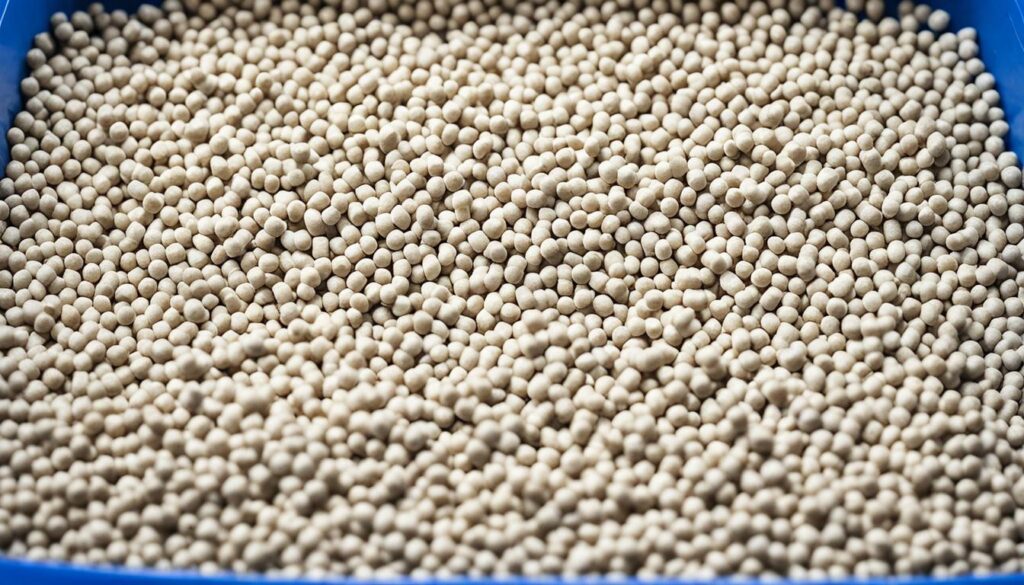
| Litter Type | Advantages | Disadvantages |
|---|---|---|
| Paper pellets | – Highly absorbent – Low dust – Eco-friendly |
– May require frequent changes |
| Wheat-based litter | – Natural and biodegradable – Odor control – Gentle on paws |
– May be more expensive |
| Corn-based litter | – Eco-friendly – Clumps well – Reduces odors |
– May track outside the cage |
| Pine pellets | – Pleasant scent – Absorbent – Controls odors |
– Some ferrets may dislike the scent |
Creating a Safe and Comfortable Environment
When it comes to providing a safe and comfortable environment for your ferret, choosing the right bedding and materials is essential. It’s important to avoid using soft woods such as pine and cedar, as they can release toxic vapors that can harm your furry friend. Instead, opt for safer alternatives such as lino or newspapers to line the cage.
Pro tip: Always prioritize ferret-safe materials to ensure the well-being of your pet.
Choosing the Perfect Ferret Bedding
Ferrets need a cozy and secure place to sleep, so investing in appropriate bedding is crucial. Consider using ferret beds, hammocks, hideouts, or shelters to provide comfortable sleeping areas. Ferrets love to curl up in soft and warm spots, so these options will certainly be appreciated.
Ensuring Adequate Sleeping Areas
Creating multiple sleeping areas within the cage is essential for your ferret’s well-being. These areas give them a sense of security and privacy. Providing elevated sleeping options like hammocks or platforms can also add to their playtime and enrichment.
Did You Know? Ferrets sleep for about 14 to 18 hours a day! That’s a lot of time spent in their cozy and comfortable beds.
By focusing on ferret-safe materials and comfortable sleeping areas, you can ensure that your ferret is happy and well-rested.
Ferret Cage Placement
When it comes to placing your ferret’s cage, it’s important to consider their comfort and well-being. Here are some key factors to keep in mind:
- Cage Location: Choose a semi-active area in your home where your ferret can feel like part of the family. This will help them stay engaged and socialize with you and other household members.
- Ventilation: Ensure proper ventilation in the location where the cage is placed. Good airflow is essential for your ferret’s health and overall well-being.
- Ideal Temperature: Maintain a temperature range between 50 and 75 degrees Fahrenheit (10-24 degrees Celsius) in the room where your ferret’s cage is situated. This temperature range ensures they stay comfortable and avoid both excessively hot and cold conditions.
- Avoid Direct Sunlight: Place the cage away from direct sunlight. Ferrets are sensitive to heat and can easily overheat if exposed to direct sunlight for prolonged periods.
- Avoid Noisy or Hectic Spaces: Choosing a location away from noisy or hectic areas of your home will help your ferret feel safe and calm. Ferrets thrive in a quiet and peaceful environment.
By considering these factors, you can provide your furry friend with a safe and comfortable living space that promotes their overall well-being.
Cleaning and Maintenance
Keeping your ferret’s cage clean is essential for their health and well-being. Regular cleaning and maintenance not only ensure a hygienic environment but also help prevent unpleasant odors and the buildup of bacteria. Here’s a step-by-step guide on how to clean your ferret’s cage.
Daily Cleaning
Performing a quick cleanup of the cage every day helps maintain a clean and sanitary living space for your ferret. Here are the daily cleaning tasks you should include in your routine:
- Wash food dishes: Remove any leftover food and wash the dishes with mild soap and warm water. Rinse thoroughly before refilling.
- Clean water bottles: Empty and clean the water bottles daily to prevent bacteria growth. Use a bottle brush and mild soap to thoroughly clean the bottle and rinse it well before refilling.
- Scoop litter: Remove any soiled litter from the litter tray or toileting area and replace it with fresh litter. This helps ensure a clean and odor-free environment.
- Wipe down surfaces: Use a damp cloth or pet-safe disinfectant wipes to wipe down the cage surfaces, including ramps, platforms, and bars. This helps remove any dirt or debris that may have accumulated.
Weekly Cleaning
In addition to daily cleaning, it’s important to perform a more thorough cleaning of the cage once a week. This involves removing everything from the cage and giving it a more comprehensive clean:
- Remove all items: Take out all toys, bedding, litter trays, and accessories from the cage.
- Wash items with mild soap: Wash all items with mild soap and warm water. Scrub the food dishes and water bottles thoroughly to remove any residue. Rinse all items well before drying.
- Disinfect the cage: Use a pet-safe disinfectant or a solution of diluted bleach to thoroughly disinfect the cage. Pay attention to corners, crevices, and hard-to-reach areas. Rinse the cage well and allow it to dry completely before putting everything back.
Monthly Deep Cleaning
Once a month, it’s recommended to deep clean the cage to ensure a thorough and comprehensive cleanse:
- Remove everything from the cage, including toys, accessories, bedding, and litter trays.
- Disassemble the cage: If possible, disassemble the cage to access hard-to-reach areas.
- Wash with soap and disinfect: Wash all cage components with mild soap and warm water. Scrub thoroughly to remove any dirt or debris. Afterward, disinfect the cage with a pet-safe disinfectant or diluted bleach solution.
- Rinse and dry: Rinse the cage well to remove any soap or disinfectant residue. Ensure all parts are completely dry before reassembling the cage.
Regular cleaning and maintenance will help keep your ferret’s cage clean, hygienic, and comfortable. It’s essential to create a routine and stick to it for the health and happiness of your furry friend.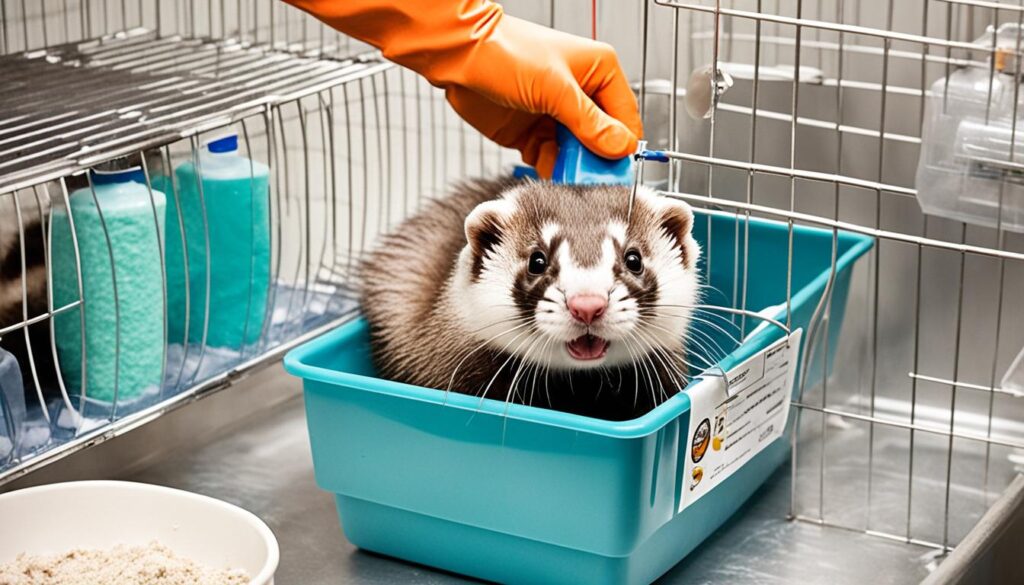
Ferret-Proofing the Room
Creating a safe and secure environment for your ferret is essential when allowing them to play outside the cage. By taking proper precautions and removing potential hazards, you can ensure that your furry friend stays out of harm’s way.
Removing Hazards
Before letting your ferret roam freely, carefully check the room for any potential dangers. Remove any small objects, such as coins or small toys, that could be swallowed and pose a choking hazard. Additionally, keep electrical cords safely tucked away to prevent your ferret from chewing on them, which could lead to electric shock.
Covering Ductwork and Vents
Ferrets are naturally curious and may explore any open spaces they come across. To prevent your ferret from entering ductwork or vents, cover them securely. This will not only keep your ferret safe but also ensure that they do not become lost or trapped in these areas.
Blocking Gaps under Doors
Ferrets are agile and can easily squeeze through small openings. To prevent them from escaping or accessing areas that may be unsafe, block any gaps under doors. This can be done using draft stoppers or door sweeps, which will effectively keep your ferret contained in the designated space.
Supervising Your Ferret
Even with a ferret-proof room, it is essential to supervise your ferret when they are outside the cage. This allows you to quickly address any potential issues or hazards that may arise. By keeping a watchful eye on your furry friend, you can ensure their safety and provide immediate assistance if needed.

Creating a ferret-safe room provides your pet with the opportunity to explore and play in a controlled and secure environment. By removing hazards, covering ductwork and vents, blocking gaps under doors, and supervising your ferret, you can enjoy peace of mind while allowing your furry companion to enjoy their freedom outside the cage.
Ferret Toys and Enrichment
Our furry friends, ferrets, are curious and playful creatures that require mental stimulation and physical activity to thrive. Providing them with a variety of toys and enrichment opportunities is essential for their overall well-being.
Choosing the Right Toys
When selecting toys for your ferret, opt for hard plastic toys that are durable and safe. Avoid toys with long strings or small parts that could pose a choking hazard. Some popular toys include:
- Interactive puzzle toys
- Noise-making toys
- Chew toys
- Tunnels and tubes
Rotate the toys regularly to keep your ferret engaged and prevent boredom.
Regular Inspection and Replacement
Regularly inspect your ferret’s toys for any signs of damage or wear. If you notice any broken or frayed parts, it’s time to replace them to ensure your ferret’s safety. Keeping a collection of toys on hand will ensure that your ferret always has something new and exciting to play with.
The Importance of Playtime
Ferrets are energetic creatures that require daily physical exercise and mental stimulation. Spending at least two hours of active playtime with your ferret each day is crucial for their well-being. During playtime, you can interact with your ferret using toys, encourage them to explore different environments, or engage them in interactive games.
“Playtime not only provides physical exercise for your ferret, but it also strengthens the bond between you and your pet. It’s a great opportunity to have fun and create lasting memories together.”
Remember, playtime should always be supervised to ensure the safety of your furry friend. Avoid using toys that could present a choking hazard or cause harm to your ferret if left unsupervised.

By providing your ferret with a variety of toys, regularly inspecting and replacing them when necessary, and dedicating time to engage in active play, you can ensure your ferret stays entertained, stimulated, and happy.
Daily Care and Interaction
In addition to setting up and maintaining a proper cage, spending quality time with your ferret is crucial. Handle and interact with your ferret daily to build a bond and keep them happy and healthy. Bonding with your ferret not only strengthens your relationship but also provides essential mental stimulation for their well-being.
Handling and Physical Interaction
When handling your ferret, make sure to support their body and hold them gently but securely. Start by stroking and petting them to establish trust. Gradually progress to picking them up and allowing them to explore their environment under your supervision. This promotes a sense of safety and comfort, allowing them to feel more at ease.
During your playtime sessions, engage in interactive games such as chasing a toy or playing hide-and-seek. This not only keeps your ferret physically active but also helps strengthen the bond between you. Monitor their response and adjust the level of play to match their energy levels.
Mental Stimulation and Training
Offering mental stimulation is crucial to prevent boredom and promote a healthy ferret. Introduce puzzle toys and treat-dispensing toys that require problem-solving skills. This stimulates their intellect and keeps them entertained for hours. Additionally, consider introducing regular training sessions to teach your ferret basic commands and tricks. This not only provides mental stimulation but also fosters a stronger bond between you and your furry friend.
Socialization with Humans and Other Ferrets
Socializing your ferret with other humans and animals is essential for their overall well-being. Invite friends and family to interact with your ferret, allowing them to become comfortable with different people. This helps prevent shyness or fear of strangers. If you have multiple ferrets, make sure to supervise and facilitate their interactions. This encourages social behavior and reduces the risk of aggression or territoriality.

Conclusion
Creating the ideal cage setup for your ferret is crucial for their well-being and happiness. By providing ample space, comfortable bedding, clean water, proper litter, and a safe environment, you can ensure a healthy and contented pet.
Regular cleaning and maintenance of the cage are essential to prevent the buildup of dirt and bacteria. Daily tasks such as washing food dishes, cleaning water bottles, and scooping litter should be performed, while a more thorough cleaning should be done weekly. This will help keep your ferret’s habitat clean and hygienic.
Beyond the physical aspects of cage setup, it is important to spend quality time with your ferret to strengthen the bond and provide mental stimulation. Engage in interactive play, training sessions, and socialization to keep your furry friend happy and mentally engaged.FAQ
What should I consider when setting up a cage for my ferret?
How can I give my ferret more space to play?
What do ferrets need in their cage?
What is the best way to provide water and food for my ferret?
What type of litter should I use for my ferret?
What kind of bedding should I use for my ferret’s cage?
Where should I place my ferret’s cage?
How often should I clean my ferret’s cage?
How can I make the room safe for my ferret to play outside the cage?
What kind of toys should I provide for my ferret?
How important is daily care and interaction with my ferret?
What is the summary of ferret cage setup?
What Are Some Tips for Setting Up a Bird Cage?
When setting up a bird cage, it’s crucial to create a stimulating environment for the wonders of bird world. Include various perches and toys to keep your feathered friend active and engaged. Position the cage in a calm, well-lit area, and ensure easy access to food and water.
Source Links
- https://exoticdirect.co.uk/news/how-to-look-after-ferrets-cage-setup-cleaning-toxic-litter-and-wood/
- https://shedhappens.net/ferret-cage-setup-ideas/
- https://www.wikihow.com/Set-Up-a-Ferret-Cage
Dana is our Lead Content Writer, bringing a wealth of knowledge and expertise to our team. With a background deeply rooted in animal studies and a profound love for all creatures, Dana is dedicated to crafting engaging and informative content that resonates with our audience. With Dana at the helm, you can trust that our content is accurate and engaging, catering to the diverse interests of animal enthusiasts everywhere.
Animals
Discover Animals That Start With W – Unique Wildlife
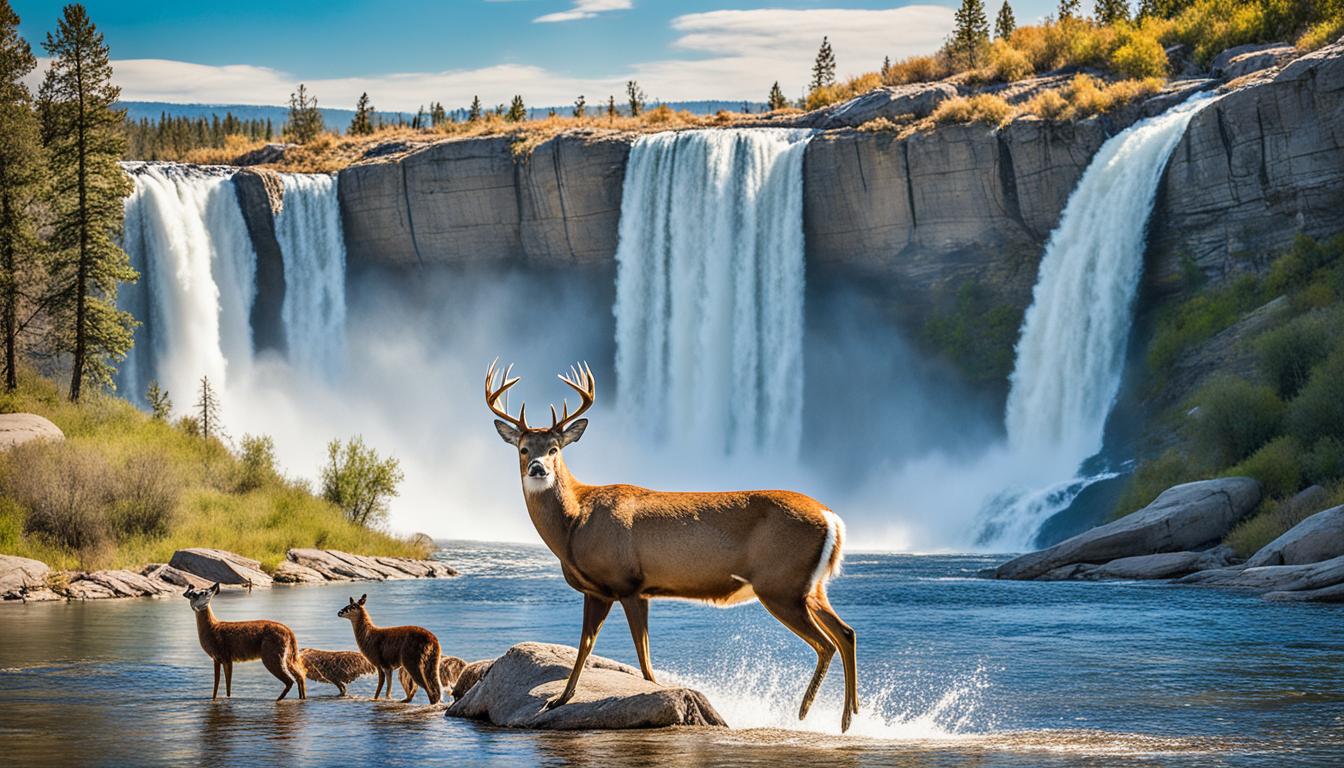
Did you know that a **whale shark** and a **white ferret** are among the intriguing animals that start with the letter ‘W’? These creatures captivate us with their unique qualities and behaviors. Let’s explore a variety of fascinating creatures starting with ‘W,’ learn about their habitats, characteristics, and their important roles in ecosystems. Get ready to dive into the enchanting world of animals starting with ‘W’! Discover the wonders of wildlife awaiting you!
Key Takeaways:
- Animals that start with ‘W’ offer a wide range of fascinating and unique characteristics.
- From the small and adorable wallaby to the majestic and enormous whale shark, there is a diverse array of wildlife with names starting with ‘W’.
- These animals inhabit various habitats, including forests, grasslands, oceans, and rainforests.
- Animals that start with ‘W’ play vital roles in their ecosystems, contributing to seed dispersal, maintaining insect populations, and balancing marine ecosystems.
- Exploring the world of animals that start with ‘W’ allows us to appreciate the rich diversity and wonders of the natural world.
Wallaby – A Small Macropod Native to Australia
The wallaby is a small macropod native to the regions of Australia and New Guinea. It is also introduced in New Zealand, Hawaii, the United Kingdom, and other countries.
Wallabies are known for their big back feet, tiny front feet, and cozy pouches for their baby wallabies. They are nature’s comedians, often seen munching on poppy fields and bouncing around in funny positions. These adorable creatures are primarily found in forested habitats and are most active at night.
Here are some interesting facts about wallabies:
- Wallabies belong to the family Macropodidae, which means “big foot”.
- There are about 30 different species of wallabies, including the agile wallaby, the red-necked wallaby, and the swamp wallaby.
- They are herbivores and primarily feed on grass, herbs, leaves, and shrubs.
- Wallabies have powerful hind legs that allow them to jump long distances and reach speeds of up to 30 miles per hour.
- They have a unique reproductive system where the female wallaby has a pouch in her abdomen where she carries and nurses her young, called joeys.
Wallabies play an important role in their ecosystems as they help maintain the balance of plant populations through their grazing habits. They also provide food for predators such as dingoes and eagles.
Did you know? Wallabies are marsupials, which means they give birth to relatively undeveloped young that continue to grow and develop inside their mother’s pouch.
Overall, wallabies are fascinating creatures that showcase the diversity of wildlife in Australia. Their unique adaptations and behaviors make them a delight to observe in their natural habitats.
Warthog – A Wild Pig from Africa’s Grasslands
The warthog, a member of the pig family, is a fascinating creature found in the grasslands, savannas, and woodlands of sub-Saharan Africa. With its distinctive features such as large tusks and wart-like patches on its face, the warthog’s appearance is both intimidating and unique.
Contrary to its fierce exterior, the warthog is actually an herbivore, relying on a diet consisting mainly of grass, roots, and bulbs. This adaptable wild pig has successfully thrived in Africa’s diverse ecosystems, playing an important role in maintaining the balance of its habitat.
Known for its keen survival instincts, the warthog has evolved specialized adaptations that enable it to navigate and thrive in its grassland environment. Its large tusks are not only used for defense but also for digging and rooting up edible vegetation.
The warthog’s habitat in the African grasslands provides ample opportunities for it to display its unique behaviors. Whether it is searching for food or socializing with its fellow warthogs, this wild pig exhibits a captivating display of agility and determination.Let’s take a closer look at the fascinating features and behaviors of the warthog:
Distinctive Features:
The warthog’s most recognizable features are its large curved tusks and facial warts, which serve as protection during conflicts with predators and rival warthogs.
Habitat:
The warthog is predominately found in the grasslands, savannas, and woodlands of sub-Saharan Africa, where it coexists with other wildlife such as zebras, antelopes, and lions.
Behavior and Diet:
The warthog exhibits both diurnal and nocturnal behavior, foraging for food during the cooler parts of the day and resting in its burrows to escape the heat. Its diet primarily consists of grass, roots, and bulbs.
With its distinct appearance and intriguing behaviors, the warthog is a remarkable wild pig that exemplifies the beauty of Africa’s grasslands and its unique wildlife.
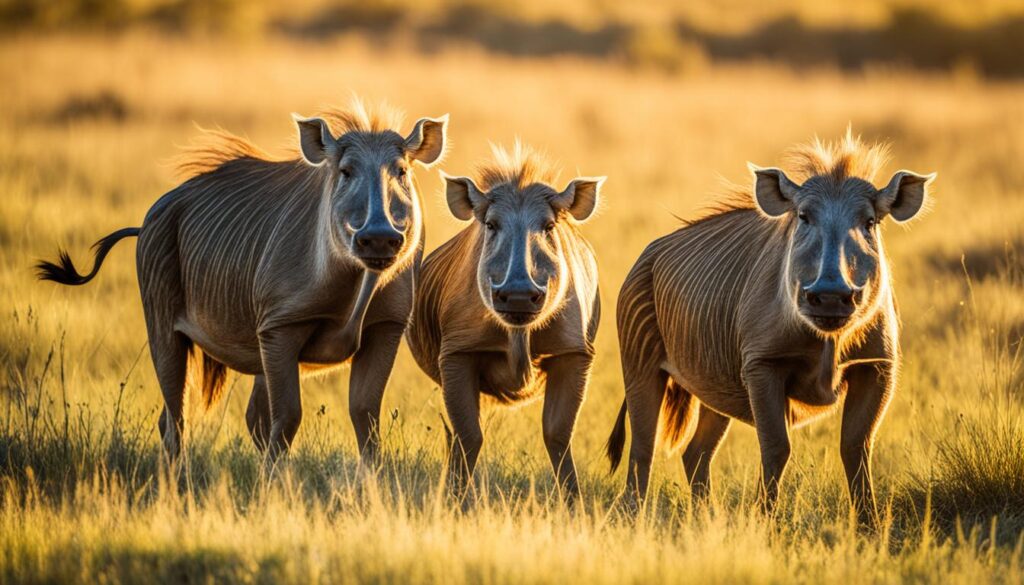
Water Buffalo – A Large Bovid Native to Southeast Asia
The water buffalo, also known as the domestic water buffalo or Asian water buffalo, is a large bovid originating in the Indian subcontinent and Southeast Asia. It is a versatile and adaptable animal and is found in various habitats across the world, including Europe, Australia, North America, South America, and some African countries.
Water buffaloes are known for their size, strength, and contributions to agriculture. They have played a significant role in human civilization, being used for plowing fields, transportation, and milk production. In Southeast Asia, water buffaloes are particularly revered for their importance to farming communities.
While the water buffalo is primarily associated with Southeast Asia, it has thrived in diverse environments, adapting to new climates and geographical conditions. This hardy species has made an impact wherever it has been introduced, showcasing its ability to adapt and survive.
Largest Breeds of Water Buffalo
The water buffalo comes in various breeds, each with its characteristics and advantages depending on the region and specific farming needs. The following table provides an overview of some of the largest water buffalo breeds:
| Breed | Origin | Weight | Height at Shoulder |
|---|---|---|---|
| Sinan | China | 800-1,500 kg | 150-190 cm |
| Murrah | India | 600-800 kg | 140-150 cm |
| Carabao | Philippines | 400-600 kg | 120-150 cm |
| Water buffalo | Italy | 500-900 kg | 140-160 cm |
The water buffalo’s adaptability, strength, and various uses have made it an integral part of agricultural practices in Southeast Asia and beyond. From plowing rice fields to providing nutritious milk and meat, this large bovid plays a crucial role in sustaining communities and economies. Its powerful presence and significant contributions to agriculture make it truly remarkable.
White Tiger – A Majestic Leucistic Pigmentation Variant
The white tiger is a majestic creature found in the wild, characterized by its unique white coloration. Also known as a bleached tiger, it is a leucistic pigmentation variant of the Mainland tiger. It is reported to be found in the wild from time to time in certain regions of India, such as Madhya Pradesh, Assam, West Bengal, Bihar, and Odisha. The white tiger is a fascinating and rare animal that captures our imagination with its striking appearance.
With its snowy white coat and piercing blue eyes, the white tiger stands out as a truly majestic creature. This unique pigmentation variant occurs when there is a recessive gene that inhibits the production of orange and yellow pigments, resulting in a white fur coloration. Although white tigers may appear visually stunning, they face challenges in the wild due to their lack of natural camouflage.
White tigers primarily inhabit dense forests and grasslands, where they have adapted to their environments. Despite being rare, these creatures play an important role in maintaining the population of the Mainland tiger species, as the recessive gene can be passed on to future generations.
White Ferret – A Small Domesticated Species
The white ferret is a small, domesticated species belonging to the family Mustelidae. It is most likely a domesticated form of the wild European polecat, evidenced by their interfertility.
White ferrets are known for their playful and curious nature, making them popular pets among animal lovers. With their sleek white fur and inquisitive eyes, they captivate the hearts of their human companions. These small creatures possess a mischievous charm and are always on the lookout for new adventures.
Although their domestication dates back centuries, white ferrets still retain many of their instinctual behaviors. They exhibit incredible agility and are skilled hunters, making them invaluable for pest control purposes. Their small size allows them to squeeze into tight spaces, enabling them to catch rodents and other small pests with ease.
White ferrets have also been bred extensively for their fur. Their plush coats have long been sought after for use in the fashion industry. However, in recent years, there has been a growing movement towards ethical fur production, prompting a shift towards more sustainable alternatives.
“White ferrets may be small in size, but they possess endless energy and curiosity. Having one in your home is like having a furry little entertainer. They are always ready to engage in playful antics and can brighten up any room with their presence.” – Sarah Johnson, Ferret Enthusiast
Caring for a white ferret requires providing them with a spacious enclosure complete with toys, tunnels, and climbing structures. A balanced diet of high-quality ferret food and occasional treats ensures their nutritional needs are met. Regular exercise and playtime are essential to keep them mentally stimulated and physically active.
With their domestication, white ferrets have become beloved companions and part of many households. Their charming personalities and adaptability make them suitable for families, couples, or individuals looking for a small and lively pet. Whether curled up in their snug beds or pouncing on their favorite toys, white ferrets bring joy and companionship to their owners.
White ferrets are a testament to the unique bond between humans and animals. Their presence in our lives reminds us of the beauty and wonder that can be found in even the smallest of creatures.
Wild Boar – A Widely-Ranging Eurasian Native
The wild boar, also known as the wild swine, common wild pig, Eurasian wild pig, or simply a wild pig, is a suid native to Eurasia and North Africa. It has been introduced to some regions in the Americas and Oceania. The wild boar is known for its adaptable nature and is now one of the widest-ranging mammals in the world, as well as the most widespread suiform. It is a highly adaptable creature found in various habitats, including forests, grasslands, and wetlands.
In Eurasia, the wild boar has a long history of coexistence with humans and is deeply ingrained in local culture and folklore. It is highly valued for its meat, which is used in various traditional dishes. Despite its status as a game animal, the wild boar population has faced challenges due to habitat loss and overhunting.
“The wild boar’s ability to adapt to various habitats and its omnivorous diet make it a successful survivor in different environmental conditions,” says Dr. Emily Reynolds, a wildlife biologist at the Eurasian Wildlife Research Institute. “Its widely-ranging behavior allows it to utilize available resources and thrive in diverse ecosystems.”
The wild boar’s physical appearance is characterized by its muscular build, bristly coat, and iconic tusks, which are elongated canine teeth that curve upward from the mouth. The tusks serve various purposes, including defense, digging for food, and establishing dominance within the social hierarchy. Adult males, known as boars, are typically larger and more robust than females, called sows.
As a species, the wild boar exhibits a variety of behaviors, including foraging, wallowing, and vocalization. They are social animals that live in groups known as sounders, comprising adult females and their offspring. The sounders are led by a dominant female, who is responsible for guiding the group and protecting the young. Adult males, on the other hand, tend to be solitary or form small groups known as bachelor groups.
The wild boar’s omnivorous diet allows it to consume a wide range of food, including roots, tubers, fruits, nuts, invertebrates, and carrion. Their strong snouts and digging abilities enable them to unearth underground food sources and create wallows or nests for resting. This behavior also helps them in dispersing seeds and aerating the soil, contributing to ecosystem health and function.
| Characteristics | Description |
|---|---|
| Size | Adult males can weigh up to 300 kilograms (660 pounds) and measure around 1.6 meters (5 feet 3 inches) in length. Females are smaller, weighing between 100-200 kilograms (220-440 pounds). |
| Habitat | Wild boars inhabit diverse habitats, including forests, woodlands, grasslands, wetlands, and agricultural areas. They are highly adaptable and can thrive in both natural and human-modified landscapes. |
| Reproduction | Wild boars have a polygynous mating system, where dominant males mate with multiple females. Breeding typically occurs in late autumn or early winter, with a gestation period of around 115-120 days. |
| Conservation Status | The wild boar is listed as a species of least concern by the International Union for Conservation of Nature (IUCN). However, localized populations may face threats due to hunting pressure, habitat loss, and competition with introduced species. |

Despite its adaptability, the wide-ranging nature of the wild boar can sometimes lead to conflicts with human activities. They are known to cause damage to agricultural crops, gardens, and natural habitat. Efforts are being made to manage and mitigate these conflicts through methods such as hunting regulations, fencing, and non-lethal deterrents.
As we continue to learn more about the wild boar and its ecological role, it is essential to strike a balance between conservation and sustainable management. By understanding and respecting this Eurasian native, we can ensure its long-term survival and coexistence with human populations.
Whale Shark – The Largest Known Fish Species

The whale shark is a magnificent creature and holds the title of being the largest known fish species in the world. Its immense size sets many records within the animal kingdom, with the largest confirmed individual measuring an impressive 18.8 meters long. This gentle giant can be found roaming the depths of the ocean, captivating the imaginations of all who encounter it.
Despite its massive proportions, the whale shark is a docile creature that poses no threat to humans. In fact, its diet mainly consists of plankton and small fish, which it captures using its unique filter-feeding method. As the whale shark gracefully swims through the water, it opens its cavernous mouth to scoop up enormous quantities of tiny organisms. It then filters out the water, retaining the nutritious food within its massive body.
The significance of the whale shark extends beyond its size and feeding habits. This magnificent ocean creature plays a crucial role in maintaining the balance of marine ecosystems. By consuming vast amounts of plankton, the whale shark helps control the population of these microscopic organisms, preventing their overabundance and ensuring the health of the entire marine food web.
“The whale shark’s massive size and gentle nature make it a truly awe-inspiring sight. It serves as a reminder of the incredible biodiversity found in the world’s oceans and the importance of preserving these delicate ecosystems.”
Encountering a whale shark in the wild is a truly humbling experience. As you swim alongside this magnificent creature, you can’t help but feel a sense of awe and wonder at the beauty of nature. The whale shark’s presence reminds us of the vastness and diversity of our oceans, and the need to protect and cherish these remarkable environments.
Woolly Monkey – Arboreal Primate of the Rainforests
Woolly monkeys, belonging to the genus Lagothrix of New World monkeys, are fascinating creatures that inhabit the lush rainforests of South America. These arboreal primates have adapted to life in the treetops and play a crucial role in maintaining the delicate balance of rainforest ecosystems.
One of the most distinctive features of woolly monkeys is their dense, wool-like fur, which provides them with excellent insulation in their rainforest habitat. Their fur is also highly prized, making them vulnerable to illegal poaching and habitat destruction.
Woolly monkeys are highly social animals, living in relatively large groups known as troops. These close-knit communities help them navigate the challenging rainforest environment and provide protection against predators. Within the troop, woolly monkeys engage in social grooming, which strengthens the bonds between individuals.
These primates are also known for their prehensile tails, which act as an extra limb, allowing them to maneuver effortlessly through the trees. The tail is used for balance and gripping branches, enabling them to traverse the rainforest canopy with agility and ease.
Woolly monkeys have a diverse diet consisting of fruits, leaves, and insects. Through their feeding habits, they contribute to seed dispersal, aiding in the regeneration of the rainforest. This makes them vital to the overall health and sustainability of their habitat.
The woolly monkey’s unique adaptations, social structure, and integral role in rainforest ecosystems make it a captivating species to study and protect. By understanding and conserving these remarkable creatures, we can ensure the survival of not just the woolly monkey, but also the rich biodiversity of the rainforests they call home.
Walking Catfish – A Unique Freshwater Airbreather
The walking catfish is a fascinating species of freshwater airbreathing catfish native to Southeast Asia. This unique creature has captured the curiosity of researchers and enthusiasts alike with its exceptional ability to “walk” and wiggle across dry land.
Walking catfish are well adapted to survive in low-oxygen environments, thanks to their specialized structures called labyrinth organs. These organs allow them to extract oxygen from the air, enabling them to breathe outside of water. This remarkable adaptation sets them apart from other fish species and gives them the ability to explore both aquatic and terrestrial habitats.
A key feature that distinguishes the walking catfish from its counterparts is its ability to move across land using its pectoral fins. By flexing and extending their bodies, they can propel themselves forward, resembling a shimmying motion. This clever maneuver allows them to search for food, suitable environments, and even migrate between bodies of water.
The walking catfish primarily inhabits the freshwater ecosystems of Southeast Asia, thriving in rivers, streams, and flooded areas. They are excellent swimmers and possess a streamlined body shape that facilitates their aquatic movements. However, when their habitats become dry or overcrowded, these amazing creatures venture onto land, utilizing their unique walking abilities to seek refuge or find new food sources.
This extraordinary adaptation of the walking catfish showcases the remarkable diversity and ingenuity of nature in Southeast Asia. Their ability to breathe air and traverse land serves as a reminder of the incredible adaptations that organisms can develop to survive and thrive in challenging environments.
Incredible Walking Catfish Facts:
- The walking catfish belongs to the family Clariidae and the genus Clarias.
- They can reach lengths of up to 60 centimeters.
- Walking catfish feed on a variety of prey, including crustaceans, insects, and small fish.
- These catfish are gifted jumpers and can even propel themselves over obstacles on land.
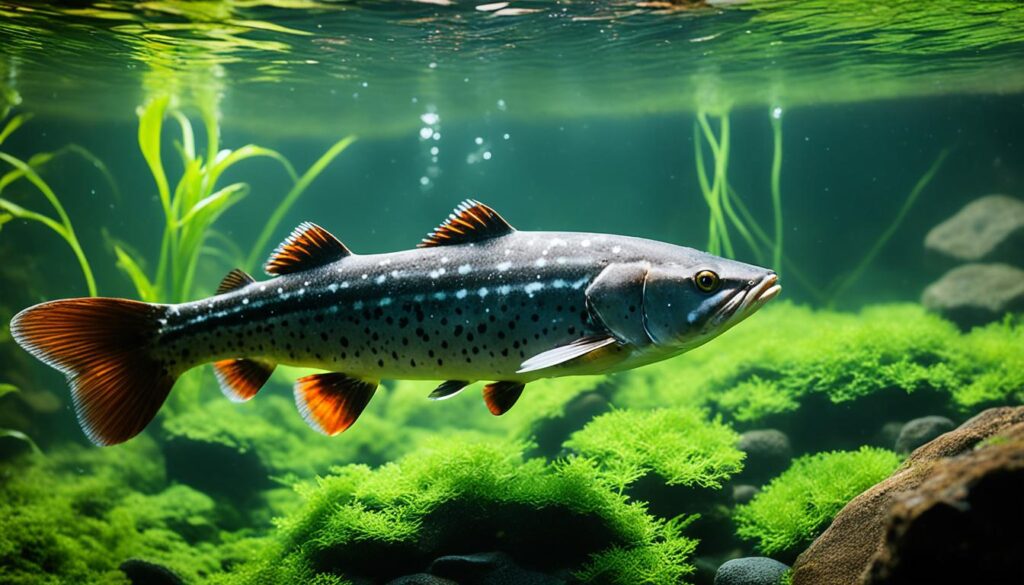
Western Gorilla – A Great Ape Found in Africa
The western gorilla is a species of the great ape found in Africa. Belonging to the genus Gorilla, it is one of the closest living relatives to humans, sharing many social and behavioral traits. Western gorillas primarily inhabit dense forests and are herbivorous, feeding on fruits, leaves, and shoots.
Western gorillas are known for their distinctive chest beating displays, which serve as a form of communication within their complex social structures. These highly intelligent creatures exhibit a wide range of behaviors and are capable of using tools.
“Western gorillas are fascinating creatures. Their close resemblance to humans and their intricate social dynamics make them a subject of great interest and study in the field of primatology.” – Dr. Jane Goodall
In the wild, western gorillas form cohesive family groups led by a dominant silverback male. They have a complex social hierarchy and engage in various social interactions, including grooming, playing, and vocalizing.
The western gorilla is native to several countries in Africa, including Cameroon, Central African Republic, Congo, Equatorial Guinea, and Gabon. It inhabits a range of forested habitats, such as lowland rainforests, swamp forests, and montane forests.
Conservation efforts are crucial for the survival of western gorillas, as they face threats such as habitat loss, poaching, and disease outbreaks. Organizations and researchers are working tirelessly to protect their habitats and raise awareness about the importance of preserving these magnificent creatures.
Habitat and Distribution
The western gorilla primarily inhabits the forests of Central Africa. There are two subspecies: the western lowland gorilla (Gorilla gorilla gorilla) and the Cross River gorilla (Gorilla gorilla diehli).
The western lowland gorilla is the most widespread and populous of the gorilla subspecies. It can be found in countries including Cameroon, Congo, Equatorial Guinea, Gabon, and Nigeria. It prefers lowland rainforests and swamp forests.
The Cross River gorilla is the most endangered gorilla subspecies, with a population of fewer than 300 individuals. It is found in the mountainous regions between Nigeria and Cameroon, primarily in the Cross River National Park.
Conservation Status
The conservation status of the western gorilla is categorized as critically endangered by the International Union for Conservation of Nature (IUCN). The primary threats to their survival are habitat destruction due to logging and agriculture, illegal hunting, and infectious diseases transmitted by humans.
Efforts to protect western gorillas involve establishing and managing protected areas, implementing anti-poaching measures, and promoting sustainable livelihoods for local communities. Research and monitoring programs also play a vital role in understanding their behavior, population dynamics, and health.
Western Gorilla Subspecies Comparison
| Subspecies | Distribution | Population | Conservation Status |
|---|---|---|---|
| Western lowland gorilla (Gorilla gorilla gorilla) | Cameroon, Congo, Equatorial Guinea, Gabon, Nigeria | Approximately 100,000 individuals | Endangered |
| Cross River gorilla (Gorilla gorilla diehli) | Nigeria, Cameroon (Cross River National Park) | Less than 300 individuals | Critically Endangered |
Note: Populations of western gorillas are estimates and subject to change due to ongoing research and survey efforts.

Woodpecker – A Noisy Bird with Special Adaptations
Woodpeckers are a diverse group of birds found worldwide, with over 200 different species. They are known for their distinctive drumming sounds, created by pecking on trees. Woodpeckers have unique adaptations, such as a strong beak and a specialized tongue, that allow them to excavate tree trunks for food and create nesting cavities. They primarily feed on insects, larvae, and tree sap. Woodpeckers are important for maintaining healthy forest ecosystems by controlling insect populations and creating habitat for other species.
Special Adaptations of Woodpeckers
Woodpeckers have evolved special adaptations that enable them to excel at their unique feeding and nesting behavior:
- Strong Beak: The woodpecker’s beak is long, straight, and incredibly strong. It allows them to chisel away at tree trunks with remarkable force, pecking at a rate of up to 20 times per second.
- Specialized Tongue: Woodpeckers have a remarkable tongue that wraps around the back of their head, protecting their brain from the impact of their drumming. The tongue is also long and sticky, perfect for extracting insects and larvae from crevices in the wood.
- Shock Absorbing Skull: To protect their brain from the constant impact of drumming, woodpeckers have a dense skull with a spongy bone layer that acts as a shock absorber.
- Strong Feet: Woodpeckers have two sharp-clawed toes facing forward and two backward-facing toes. This unique foot structure allows them to grip onto tree trunks tightly, providing stability and leverage while pecking and climbing.
- Barbed Tongue Tips: Some woodpecker species, such as the sapsuckers, have specialized tongue tips with bristles or barbs. These adaptations allow them to lap up sap from trees by collecting it on their tongue.
Woodpeckers play a crucial role in forest ecosystems as they help control insect populations by feeding on wood-boring insects and larvae. Their excavations also create nesting cavities that are used by other bird species for shelter and breeding.
Woodpeckers are fascinating birds that showcase the incredible adaptations found in nature. Their noisy drumming sounds and unique feeding behaviors make them a joy to observe in the wild.
Conclusion
In conclusion, animals that start with the letter ‘W’ offer a fascinating glimpse into the diversity of the animal kingdom. From unique mammals like the walrus and wolverine to fascinating birds like the whale and woodpecker, these animals have adapted to various habitats and evolved distinct traits and behaviors.
Whether they roam the land, swim in the ocean, or fly through the sky, animals that start with ‘W’ contribute to the delicate balance of ecosystems and remind us of the wonders of the natural world.
With their incredible adaptations and intriguing characteristics, these animals captivate our attention and inspire us to appreciate the rich biodiversity that exists on our planet. By learning about and protecting these fascinating creatures, we can ensure the preservation of their habitats and contribute to the conservation of the natural world for future generations.FAQ
What is a wallaby?
What are some distinctive features of a warthog?
Where are water buffaloes found?
What is a white tiger?
What is a white ferret?
Where can wild boars be found?
What is a whale shark known for?
What is unique about woolly monkeys?
How do walking catfish survive on land?
What are some notable characteristics of western gorillas?
What are some special adaptations of woodpeckers?
Dana is our Lead Content Writer, bringing a wealth of knowledge and expertise to our team. With a background deeply rooted in animal studies and a profound love for all creatures, Dana is dedicated to crafting engaging and informative content that resonates with our audience. With Dana at the helm, you can trust that our content is accurate and engaging, catering to the diverse interests of animal enthusiasts everywhere.
-

 Vetted3 months ago
Vetted3 months ago15 Best Dog Food Brands Recommended by Vets for Healthy and Happy Pups
-

 Vetted3 months ago
Vetted3 months ago14 Best Homemade Dog Food Recipes Your Pup Will Love – Vet Approved & Nutritious
-

 Vetted3 months ago
Vetted3 months ago15 Best Cat Foods for Managing Hyperthyroidism – Vet Approved and Feline Friendly
-

 Vetted3 months ago
Vetted3 months ago15 Best Dog Foods for Kidney Disease – Expert Recommendations for Your Pet's Health
-

 Vetted3 months ago
Vetted3 months ago15 Best Wet Cat Foods for Older Cats to Keep Them Healthy and Happy
-

 Cats2 months ago
Cats2 months agoCat Weight Chart by Age: Kitten to Senior in Lbs
-

 Vetted3 months ago
Vetted3 months ago15 Best Fresh Dog Food Delivery Services for Your Pup's Health and Happiness
-
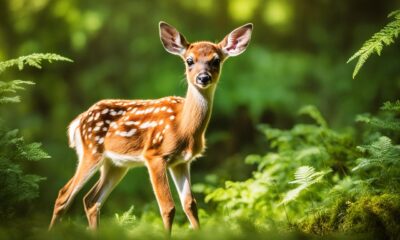
 Deers3 months ago
Deers3 months agoCaring for Baby Deer: Tips for Healthy Fawns




















